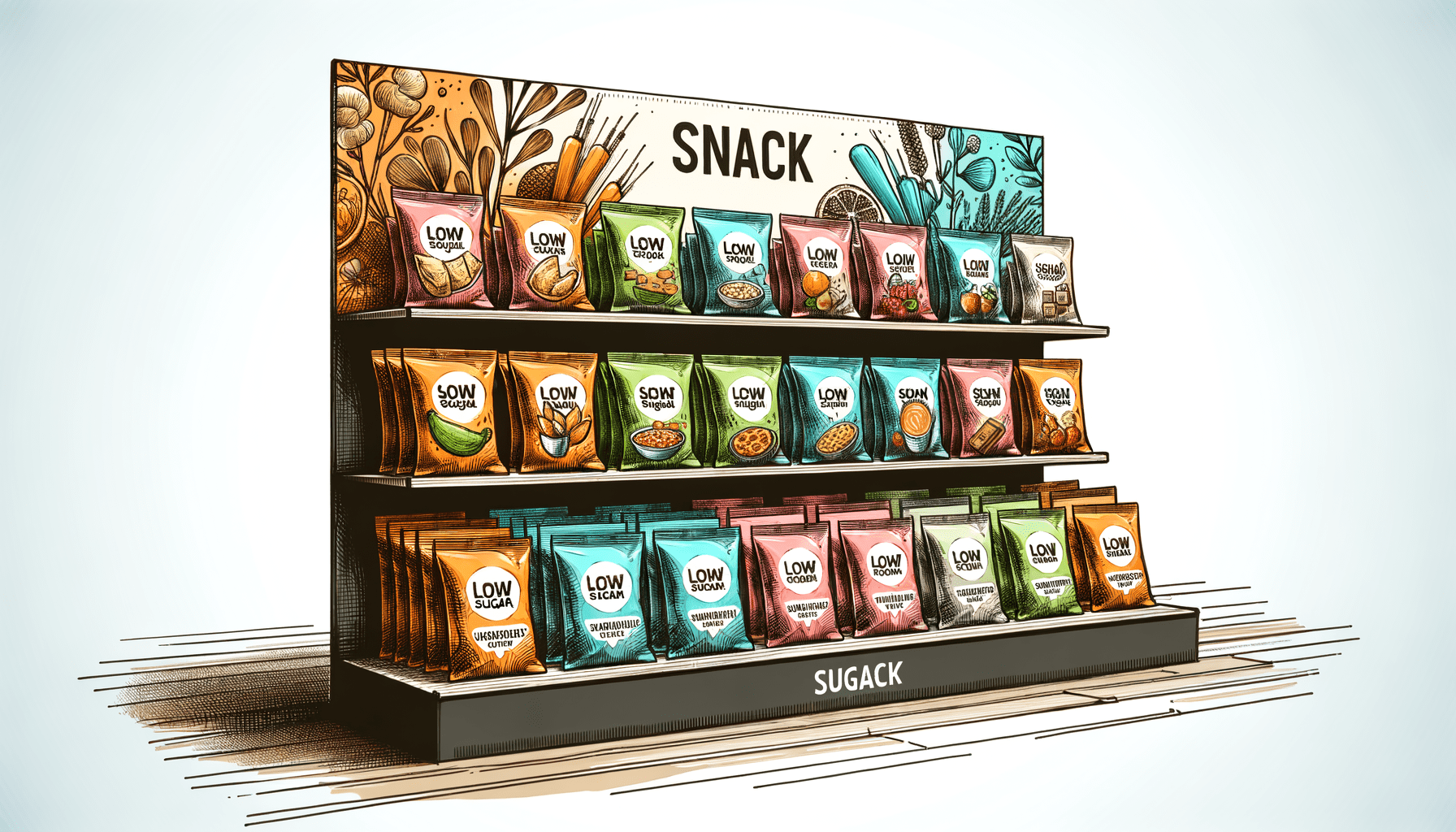Demand generation is a crucial aspect of any successful business, with B2B marketing leaders spending approximately 20% of their marketing budget on demand gen. Effective demand generation strategies can help you reach new customers, improve brand awareness, and increase...
Demand generation is a crucial aspect of any successful business, with B2B marketing leaders spending approximately 20% of their marketing budget on demand gen. Effective demand generation strategies can help you reach new customers, improve brand awareness, and increase sales – generation revenue and growth for your company.
Reading time: 5 minutes
What is B2B demand generation?
Demand generation is the process of creating awareness and stimulating interest in your product or service, ultimately leading to lead generation, effective marketing of your solution, and the establishment of your brand as a trusted industry thought leader.
This strategy encompasses a wide range of activities, starting even before identifying potential prospects and continuing beyond the point of conversion. A well-executed demand generation strategy nurtures long-term engagement with prospects and addresses every touchpoint in the buyer’s journey.
To ensure the effectiveness of demand generation, alignment and transparency between sales and marketing teams is crucial. This collaboration enables the identification of gaps or obstacles in the process.
To break it down further, B2B demand generation can encompass and/or complement three integral pillars:
1. Lead generation
This foundational pillar captures potential customers’ attention, adding them to your marketable database. Tactics like content creation, SEO, and social media marketing are used. These leads are then nurtured and passed to the sales team.
2. Demand capture
This taps into existing market demand, guiding prospects towards your products and services. Utilizing lower funnel content, such as pay-per-click (PPC) ads, SEO, and third-party intent data, it solidifies your brand proposition, converting market interest into leads.
Learn more about Inbox Insight’s demand capture service today and start converting in-market leads from your ideal customer profile (ICP) and target accounts.
3. Pipeline acceleration
Focusing on expediting the sales process, this stage ranges from meaningful customer conversations to targeted content that addresses pain points. Events and webinars provide direct engagement opportunities.
Why is B2B demand generation important?
In an era where businesses are constantly vying for the attention of potential customers, creating a robust demand gen strategy provides a competitive edge.
B2B demand gen is also instrumental in educating potential customers about your business and the unique solutions you offer. It enables you to illuminate needs that potential customers may not have even considered, thus setting the stage for your product or service to be the solution they’ve been seeking.
The benefits of B2B demand generation
B2B demand gen offers a host of benefits for businesses. Here are some of the key advantages:
Brand awareness: By consistently providing valuable, targeted content via various channels, you can significantly boost your brand’s visibility and recognition. Quality lead generation: B2B demand gen focuses on attracting high-quality leads; potential customers who are genuinely interested in and likely to purchase your product or service. Improved sales pipeline: With a steady stream of quality leads, your sales team can focus their efforts on nurturing these leads, consequently improving the efficiency and productivity of your sales pipeline. Increased revenue: Ultimately, a successful B2B demand gen strategy can lead to increased revenue, as attracting high quality leads means your leads are more likely to convert into paying customers.How does B2B demand generation differ from lead generation?
One of the most significant pitfalls in demand generation is the misconception that it is the same as lead generation when, in fact, it is not.
While both B2B demand gen and lead generation contribute to a company’s growth, they play distinct roles in the marketing and sales process. B2B demand gen encompasses a broader range of activities, aimed at attracting new visitors and building a strong reputation in the industry. On the other hand, lead generation focuses on converting these attracted prospects into leads.
The B2B demand generation funnel
The B2B demand gen funnel typically consists of three stages:
Awareness: This is the initial stage where potential customers first become aware of your brand and the solutions you offer. At this point, the goal is to attract as many potential customers as possible through various channels such as content marketing, SEO, and PPC advertising. Consideration: At this stage, potential customers are considering various solutions to their problem, including yours. Your goal here is to provide more detailed information about your product or service, demonstrating how it can solve their problem better than other options in the market. Decision: This is the final stage where potential customers are ready to make a purchase decision. At this point, your goal is to persuade them that your product or service is the best choice.Demand generation best practice for developing a strategy
A successful demand generation strategy will bring high quality, reliable leads to your business and ultimately help it grow. These demand gen best practices are crucial to keep front of mind, to ensure your demand generation efforts are reaching their maximum potential:
Establish your demand generation goals – this might be 150 SQLs a month or 500 per quarter. Define your ideal customer – developing buyer personas off the back of this is a great way to stay focused on your target customers. Gather buyer intelligence – identify: Customer needs – through intent intelligence and data science Keywords – what keywords are being searched around your area of expertise? Pain points – when you know the most pressing challenges facing your target audiences, you’ll understand how to target them with relevant content that engages and intercepts. Tailor your messaging – personalization is key, as well as relevant messaging that will resonate with the specific stage of the buyer journey they are at. Never stop testing! – continuous measuring and reporting ensures you stay competitive and quickly recognize areas requiring improvement.14 B2B demand generation strategies
In business to business (B2B), there are numerous effective methods to generate demand. By employing elements such as content marketing, email campaigns, SEO, and digital advertising in combination, businesses can discover more sales opportunities. Here are 14 demand generation strategies and tactics for your consideration:
1. Improve demand funnel framework
Improving your demand funnel framework can help you better target and engage potential customers at every stage of the sales funnel.
2. Use intent data to find in-market buyers and scale demand
B2B buyer intent data offers valuable insights into prospects actively researching or intending to purchase your product or service, enabling you to customize your marketing strategies and engage with these prospects at the opportune moment.
In fact, nearly 40% of businesses allocate over half of their marketing budget to harness the power of intent data.
3. Search engine optimization (SEO)
SEO is a crucial component of a successful B2B demand gen strategy. By optimizing your website and content for relevant keywords, you can boost your visibility on search engines – attracting more potential customers.
4. Content marketing
Content marketing is a cornerstone of any demand generation strategy. It holds a pivotal role as high quality and engaging B2B marketing content serves a dual purpose – drawing in potential customers and establishing your brand as an authoritative industry voice. This diverse content landscape includes blogs, videos, eBooks, podcasts, webinars, and more.
In a study conducted by DemandGen, it was found that 62% of B2B decision-makers place a premium on practical content, such as case studies and visual materials like webinars, when shaping their purchasing decisions. This preference reflects their increased emphasis on the credibility and reliability of the information source.
5. Social media marketing
Social media platforms offer a powerful way to engage with potential customers. By creating and sharing engaging content on platforms like LinkedIn, you can attract and engage with your target audience.
6. Pay-per-click (PPC) advertising
PPC advertising allows you to reach potential customers directly by placing paid advertisements on search engines and social media platforms.
7. Email marketing
Email marketing is a great way to nurture leads and guide them through the sales funnel. By sending targeted, personalized emails, you can keep your brand top of mind and encourage them to take the next step in their buying journey.
8. Public relations (PR)
PR can be an effective way to build your brand’s credibility and visibility. This could include press releases, media relations, and thought leadership articles.
9. Partner marketing
Partner marketing involves collaborating with other businesses that share a similar target audience. This can help you reach a larger audience and generate more leads.
10. Use account-based marketing
ABM involves targeting specific accounts with personalized marketing campaigns. This approach proves to be highly effective in engaging high-value accounts and expediting the sales process.
In fact, our research found that 64% of B2B marketers agree that ABM provides a better return on investment compared to other marketing strategies.
11. Integrate CRM and marketing automation
One of the best demand generation tools that B2B marketers leverage is CRM and marketing automation. Integrating CRM and marketing automation tools can streamline your B2B demand gen efforts, enabling you to effectively target, engage, and nurture leads.
12. Lead nurturing
Lead nurturing involves developing relationships with potential customers at every stage of the sales funnel. This can include sending personalized follow-up communications and offers to convert engaged prospects into customers.
13. Lead scoring
Lead scoring involves ranking leads based on their likelihood to convert into customers. This can help your sales team prioritize their efforts and focus on the most promising leads.
14. Trade shows and events
Trade shows and events provide an opportunity to engage face-to-face with potential customers. By showcasing your product or service in person, you can create a lasting impression and generate qualified leads.
For a deeper dive into 9 demand generation examples, check out our comprehensive article.
Measuring the success of your B2B demand generation activities
In order to evaluate the success of your B2B marketing campaigns, it’s important to track key demand gen metrics such as:
Cost per acquisition (CPA): the average cost of acquiring a new customer. Customer lifetime value (CLV): the total net profit a company makes from any given customer. Lead conversion rate: the percentage of website visitors who fill out your lead capture form. For example, if your website has 600 visitors and 30 fill out the form, your lead conversion rate is 5%. MQLs to SQLs conversion rate: similar to the above, but reveals how well your demand generation efforts are nurturing leads toward readiness for your sales team, a pivotal aspect of the B2B sales process. Close rate: how many sales were made against the number of leads received – which is essential for gauging the success of your lead-to-sales conversion process.Accelerate your demand generation growth with Inbox Insight
Inbox Insight’s B2B demand generation services drive results. Combining best practice tactics and unique insights to accelerate your growth, we know how to run full-funnel campaigns that reach and convert your target audience into high quality leads.
We identify who is in-market using intent data and market intelligence. Then accelerate your go-to-market with our all-in-one services.
Discover how our targeted demand generation service can boost your sales – get in touch with our expert team today to elevate your efforts.
Here’s how we use Insights to accelerate your demand generation results…
The post What is B2B Demand Generation? [14 Strategies to Adopt] appeared first on Accelerate B2B Demand Generation Results | Inbox Insight - Demand More.







![24 B2B Buyer Insights [Revealed]](https://www.inboxinsight.com/wp-content/uploads/2023/10/Market-Intelligence-Blog-Banner-Small-1024x126.png)



